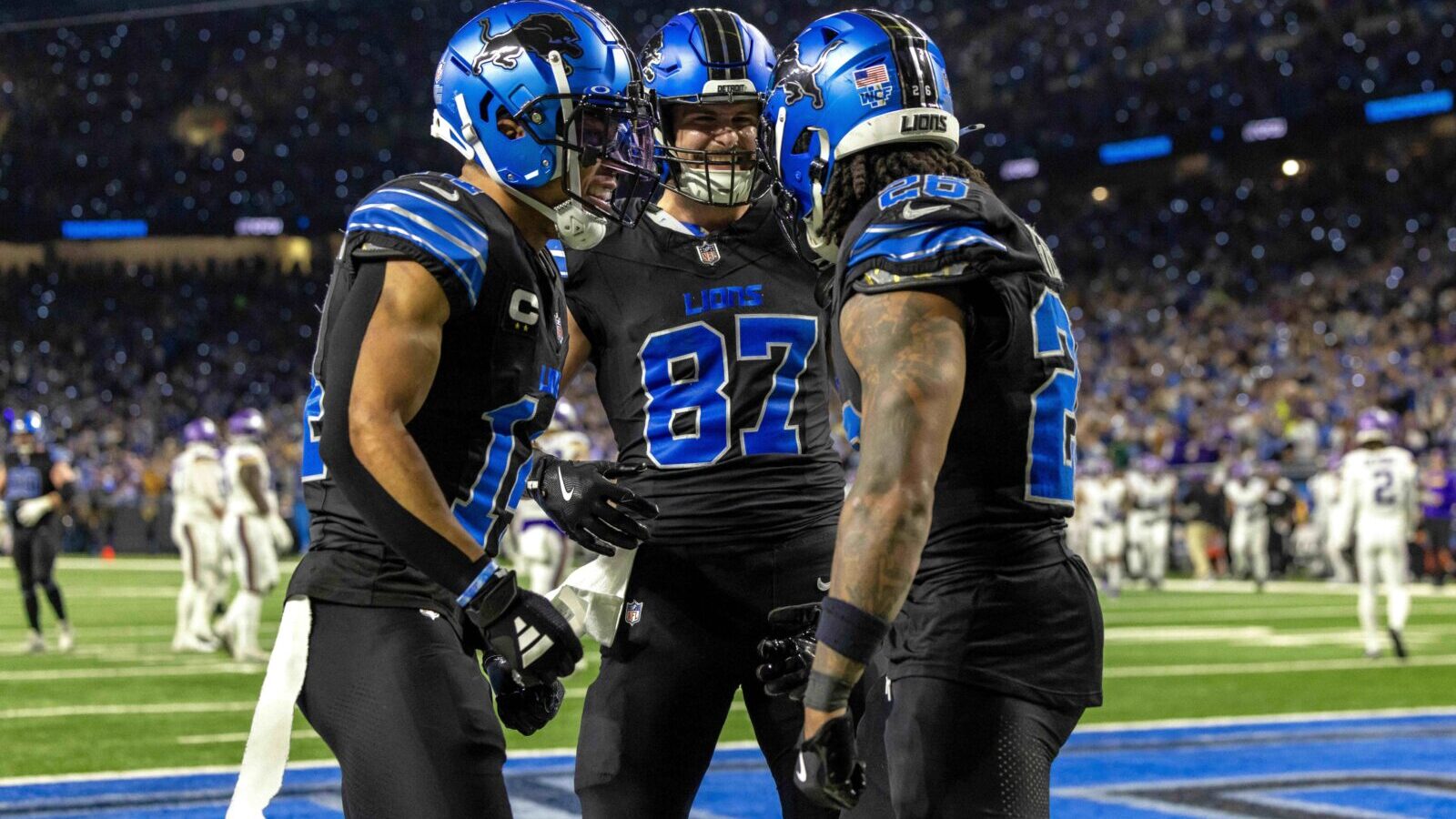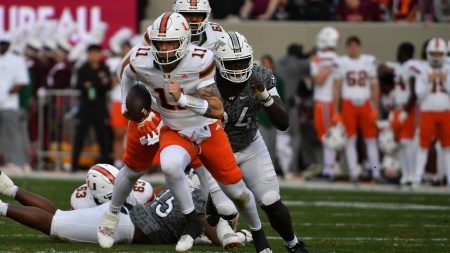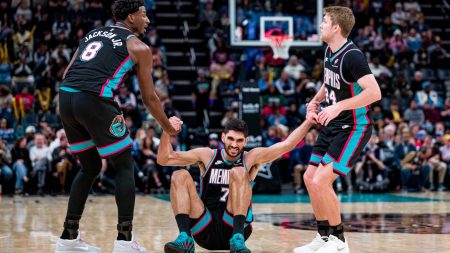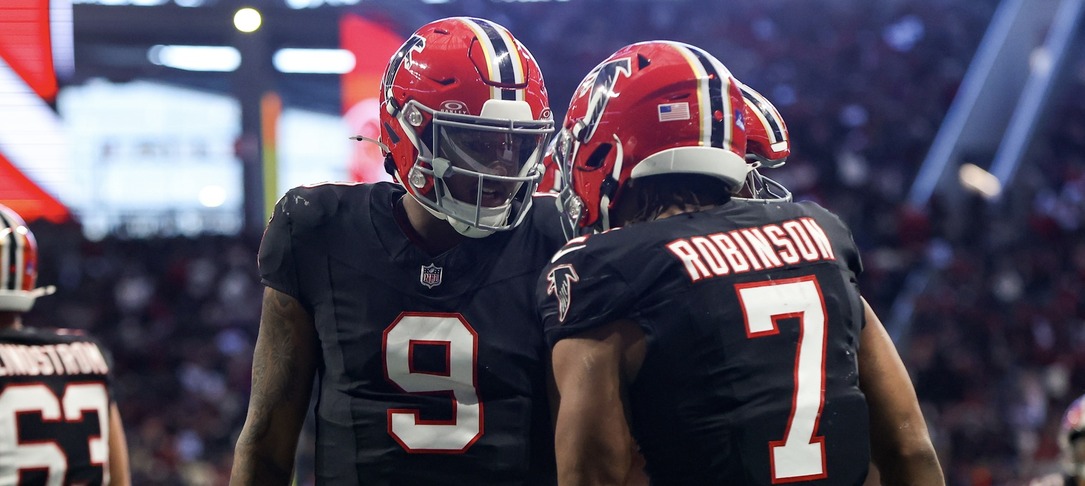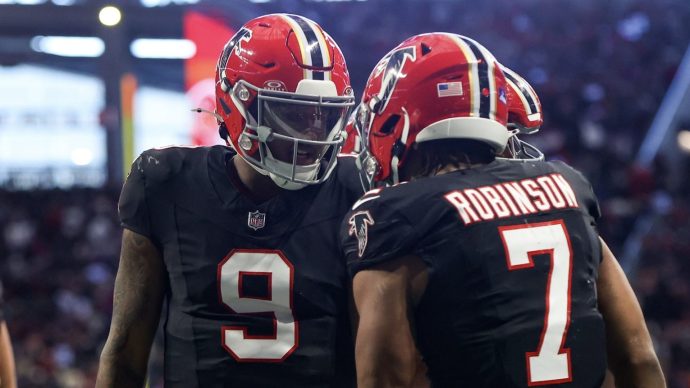Are you suffering from the post-Super Bowl blues? Have no fear. Underdog has the cure for what ails you.
It’s not too early to jump in best ball contests at Underdog, as they’ve already opened their pre-NFL Draft contests, such as The Little Board ($3 entry fee), The Big Board ($10 entry fee), The Bigger Board ($100 entry fee), and The Biggest Board ($250 entry fee) as well as non-tournament style drafts.
Underdog has offerings for gamers of every budget. Gamers who haven’t played best ball yet shouldn’t feel intimidated, either.
Best Ball Tips – NFL Strategy Guide
Editors Note: In addition to Underdog, make sure to check out FastDraft as a year-long option for NFL DFS drafts and tournaments.
The starting roster requirements at Underdog are one quarterback, two running backs, three wide receivers, one tight end, and one flex (running back, wide receiver, or tight end). In pre-NFL Draft Underdog best ball drafts, teams have 12 bench spots. After the NFL Draft, there are 10 bench spots.
Unlike traditional fantasy leagues, gamers only draft Underdog best ball teams. There are no trades, cuts, or additions. Furthermore, gamers don’t set their lineups. Their optimal starters are picked weekly.
Let’s dig into the strategy with the basics out of the way.
Rookies (Pre-NFL Draft)
Let’s start with a time-sensitive topic. After the NFL Draft, rookies will settle in with reasonable average draft positions (ADP). However, rookies are one of the biggest edges for gamers doing their homework on the incoming prospects. I’ve played in pre-NFL Draft best ball contests for a few seasons, and most rookies will see their ADPs climb closer to the NFL Draft.
Thus, it’s a buying opportunity, namely for players projected to be picked in the first two rounds of the NFL Draft. I encourage drafters to dig into big boards from prominent and well-regarded NFL Draft analysts, such as Daniel Jeremiah, Bucky Brooks, Todd McShay, Mike Renner, Mel Kiper, Field Yates, Nate Tice, Dane Brugler, etc. Drafters should also consult mock draft aggregator sites since there’s a wisdom of the crowds.
It also helps to have an idea of who will test well at the NFL Draft Combine. Bruce Feldman’s Freaks List is a helpful tool for identifying freaky combine testers. Many of the running backs and wideouts have competed in track. Thus, they have timed running data from high school or college.
Understanding who will light up the stopwatches in the 40-yard dash or jump out of the stadium in jumping measurements can give early drafters a leg-up on people reacting to players surging in ADP after testing well.
Stacking
Stacking is a critical component of maximizing scoring upside in best ball contests. For those unfamiliar with stacking, it’s drafting a quarterback and his skill-position players. Wideouts and tight ends correlate more closely with the quarterback than running backs since nearly all of a wide receiver’s or tight end’s scoring is tied to the quarterback’s passing production. However, a running back will also score as a runner.
Nevertheless, stacking a running back with his quarterback is also a high-upside move. A running back’s receiving production correlates with the quarterback completing passes to him. However, there’s also an indirect correlation. A quarterback leading a high-scoring offense will also create rushing touchdown opportunities for his running back.
The correlation is more straightforward between quarterbacks and his wideouts and tight ends. If a quarterback has a massive season as a passer, he’ll almost certainly have at least one standout performer at wide receiver or tight end and possibly multiple players who outperform their ADP.
Late-round stacking can pay the biggest dividends in best ball. For example, gamers who drafted C.J. Stroud, Nico Collins, and Tank Dell before the 2023 season were treated to three players vastly over-performing their respective ADPs.
So, taking swings on young quarterbacks and their pass-catchers is a path to hitting on mid-round and late-round values when things click.
Roster Construction Rule of Thumb
There are many paths to winning the biggest prizes in best ball. It’s possible to win the big bucks by drafting a robust running back roster, a zero running back roster, an early-round quarterback, a late-round quarterback, etc. Yet, gamers should still abide by a general rule of thumb when picking their rosters.
Don’t go overboard with allocating too many resources to any positions. Robust running back drafters who pick running backs with their first three picks should draft only five or six running backs and wait until the middle to later rounds to draft their final two or three running backs. Having another top-shelf running back as the RB4 isn’t helpful if the top three running backs meet or exceed their ADP expectations since only three running backs can start any given week. Drafting a fourth running back too early is essentially planning for one of the first three running backs to underperform their expectations.
Draft resources also extend beyond the draft capital (the round) when players are selected. There isn’t a reason to draft six quarterbacks or six tight ends. Only one quarterback can start any given week, and tight ends are usually a lousy option for the flex.
Essentially, there’s a scale gamers should mentally balance when drafting best ball teams – the more early picks used on a position, the fewer players drafted at that position.
Conversely, drafting more players at a position neglected early can help offset quality with quantity. It’s also reasonable to have a balanced roster by mixing early-round running backs and wide receivers and even popping one of the top quarterbacks or tight ends.
Byes
Byes aren’t a consideration yet because the NFL schedule hasn’t been released. However, once the schedule is released, likely in May, it gives drafters another wrinkle. Teams drafting only two quarterbacks or two tight ends should be cognizant of the byes for their starters.
It’s not fun eating a zero at quarterback because both of your signal-callers have the same bye. The same is true at tight end. However, gamers shouldn’t entirely dismiss drafting two quarterbacks or two tight ends with the same bye because there is a game-theory angle.
Many gamers will avoid drafting quarterbacks with the same bye week, creating the potential for a unique combination during the fantasy playoffs for teams that qualify with two quarterbacks sharing a bye week. Again, the same is true at tight end.
MORE CONTENT: NFL Draft Props | NFL | NBA | NHL | PGA

